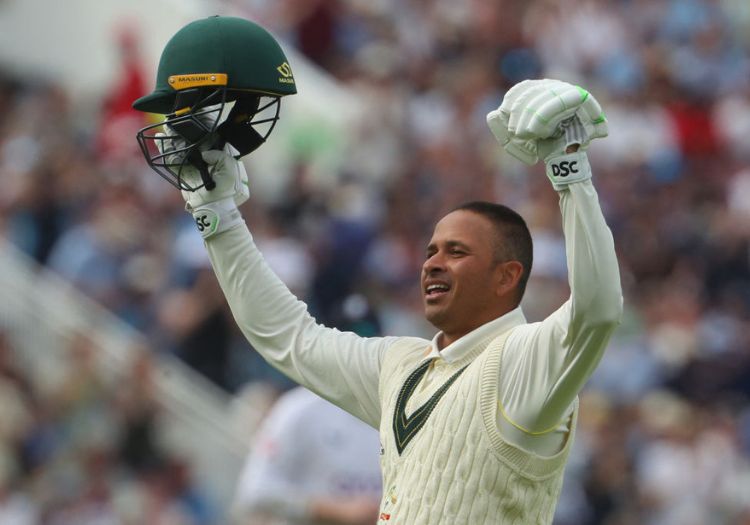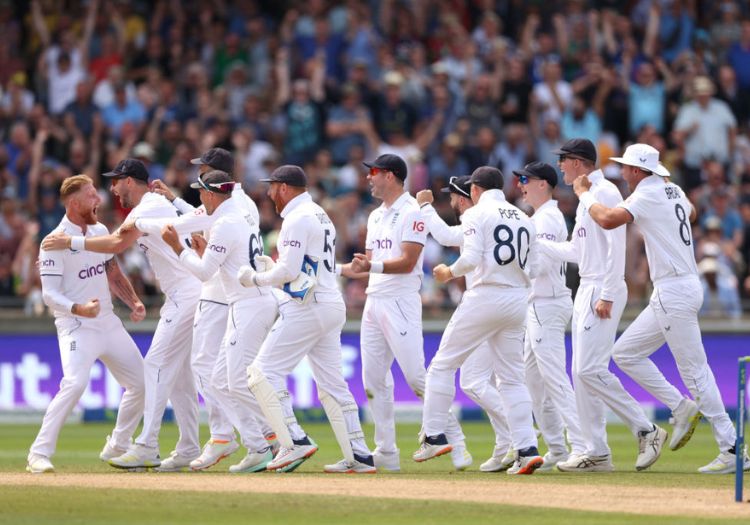PAUL EDWARDS’ ASHES DIARY: Sid was appalled and amazed. “Why?” he asked very loudly when I got into his cab and told him that Ben Stokes had called a halt on 393 for 8. A few hours later, the barman in The Beacon was similarly shocked

Modern Australian cricketers do not roll with anyone’s punches.
They may lose fights but they will make sure the bloody victors have also sacrificed teeth in the process. Quiescence is not their style. Their country’s cricketing history may be populated with batsmen like Ken “Slasher” Mackay or Bill Lawry, for whom obduracy was an act of faith, but they played in a different, more conservative, era, when the game’s orthodoxies were undisputed, its formats limited and its truths timeless.
Subsequent captains like Ian Chappell, Allan Border and Steve Waugh had no time for such an approach. Even Waugh’s defensive shots pullulated with hard-edged defiance. Consider Patrick Eagar’s famous photograph of him during his 152 not out at Lord’s in 1989 with Jack Russell keeping and Dickie Bird at square leg.
And now, should you wish to reflect on the effect England’s strategy has already had on this game in general or Australia’s approach to it, perhaps you might consider just a few comparisons:
In the first 15 minutes of the second day’s play at Edgbaston, Stuart Broad and James Anderson bowled two maidens, as many as Australia’s bowlers had managed in the entire first day. (At tea, England’s total had gone up to 12.)
Inside the half-an-hour of the first day’s play, with the ball still new and his opponents one wicket down, Pat Cummins had posted three close fielders – but also three on the boundary.
He seemed to be accepting the probability that England’s batsmen would hit his bowlers to both square leg and deep point and was therefore seeking to limit the damage. Dennis Lillee and Glenn McGrath also had mornings in the dirt but one wonders how they might have responded to such a field. Merv Hughes’ reaction would also have been interesting. Australia conceded 54 singles in the first session of the Ashes series.

England and Australia have played out two entertaining days at Edgbaston [Getty Images]
Let’s compare run rates. As this paragraph was being written, Travis Head had just been dismissed, ending the counter-attacking partnership he and Usman Khawaja were sharing in the hour after lunch on Saturday. Australia are 154 for 4 after 48 overs, a run rate of 3.2. England’s rate, admittedly over their whole innings, which included that late assault by Joe Root and Ollie Robinson, was 5.04.
Let’s widen the comparison to the recent match for the World Test Championship between Australia and India. The run rates for the four innings in that match were 3.86, 4.24, 3.19 and 3.68.
As things stand, it seems that the world’s major Test-playing nations are intrigued by the entertainment-heavy strategy of Ben Stokes and Brendon McCullum and might even admire it, but they are not so impressed that they will adopt it themselves.
When asked about England’s approach to Test cricket at the very start of the tour, Cummins’ polite response was that it was quite interesting but Australia’s way of doing things had worked quite well in recent years and he saw no reason to change it.
But that’s why this series is important and may even prove pivotal in determining how Test cricket will be played in other countries. For while England’s approach is to attack and entertain at whatever cost, Australia, whatever Cummins says, have been content to set fields that limit their suffering to a mere five runs an over.
Both approaches cause momentary bemusement as anyone in the press box when Stokes declared on Friday evening could have testified.
And the astonishment was not confined to those employed to write about the game. Sid, for example, was appalled and amazed. “Why?” he asked very loudly when I got into his cab and told him that Stokes had called a halt on 393 for 8. A few hours later, the barman in The Beacon was similarly shocked.
“Can you believe he declared?” he queried as he handed me my lime and soda. It seems that for the next month or so, red-ball cricket will be a matter for public discussion once again. We should already be grateful to both sides for that.

Usman Khawaja celebrates his day-two hundred [Getty Images]
As it happens, everyone to whom I speak in the press box is surprised and delighted by Stokes’ declaration…..but none of them would have done it themselves. After all, when is it easier to score runs? On the first evening against a flagging attack or in the third innings when you are building a lead?
And what about the admittedly rather dull objective of putting more miles in the Australians’ legs at the beginning of a series that will see five Tests played in 46 days.
Stokes dispensed with all this orthodoxy for the sake of a strategy based on taking a wicket in the few overs left to him. He therefore made Khawaja and David Warner do what they least wanted to do albeit that by ending his own side’s innings he had achieved Cummins’ immediate goal for him.
One doubts Australia’s skipper felt patronised but there seems no likelihood of him following suit.
If all this seems like the deliberation of a jury who are many miles from a verdict, that is entirely fitting. It is also mirrored on social media where half the respondents thought Stokes a master-strategist and the other half wanted to see Australia pile up 500 and England get buried.
My own much more general hope is that both countries’ plans have much to be said for them by the time we get to The Oval. The first two days of this match have simply suggested some of the terms on which the contest will be conducted over the next six weeks.
So maybe it will be refreshing to end with something about which there is no doubt at all: the quality of Joe Root’s batting.

England celebrate the wicket of Steve Smith [Getty Images]
For some spectators that was evident on Friday in his signature shots through gully, for others in his cover-driving or his straight sixes off Nathan Lyon. I will settle for the reverse-scoops he played off Cummins and Scott Boland.
The first six seemed to me to be hit whereas the second was merely timed and flicked but both shots were such extraordinary combinations of brain and eye and muscle that it reminded me of one of my favourite passages from William Hazlitt’s 1821 essay “The Indian Jugglers”:
“Coming forward and seating himself on the ground in his white dress and tightened turban, the chief of the Indian Jugglers begins with tossing up two brass balls, which is what any of us could do, and concludes with keeping up four at the same time, which is what none of us could do to save our lives, nor if we were to take our whole lives to do it in. Is it then a trifling power we see at work, or is it not something next to miraculous?”
Related Topics
Please ensure all fields are completed before submitting your comment!
